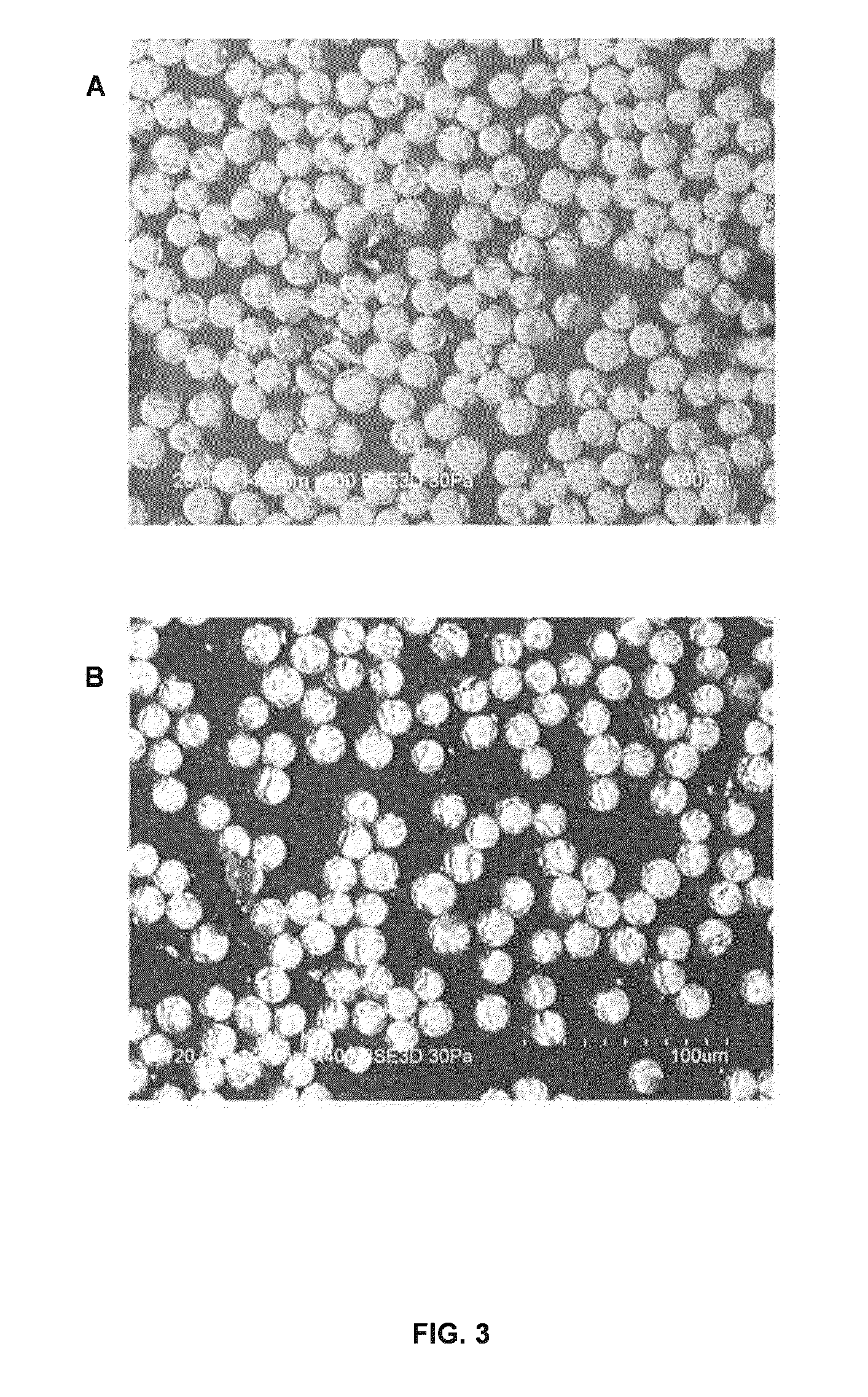Dual cure composite resins containing uretdione and usaturated sites
a composite resin and uretdione technology, applied in the direction of film/foil adhesives, polyurea/polyurethane coatings, coatings, etc., can solve the problems of high waste of materials, time-consuming, messy and inefficient, and difficult to achieve high fiber or fabric content in composite parts using hand layup methods
- Summary
- Abstract
- Description
- Claims
- Application Information
AI Technical Summary
Benefits of technology
Problems solved by technology
Method used
Image
Examples
example 1
Testing of the Mix Ratios for Components (A), (B) and (C)
[0126]
TABLE 1MaterialComponentDescriptionSupplierSartomerAmethacrylatedSartomerCN151diglycidyl etherCompanyof Bisphenol A(Exton, PA)CRELAN ®BcycloaliphaticBayerEF 403polyuretdioneMaterialScienceLLC(Pittsburgh, PA)SartomerCethoxylatedSartomerSR540bisphenol ACompanydimethacrylate(Exton, PA)DZincacetoacetonateEdicumylperoxide
[0127]Preparation of the Dual-Cure Composition
[0128]This example illustrates the preparation of an exemplary dual-cure composition comprising various mix ratios of component (A)+(B) with component (C). Identities of such components according to embodiments of the present invention are listed in Table 1.350 g of a mixture containing 35%, 47.5%, 60%, 72.5%, 74.5%, and 85% of component (A)+(B) relative to component (C) was put into a cup and mixed in a Flacktek spin mixer, first at 2700 rpm for ten minutes and then at 3300 rpm for five minutes. Free catalyst [component (D)+component (E)] was added to a final of ...
example 2
Testing of Resin Stability
[0142]A sample of the dual-cure composition formulated as a prepreg material was stored in the freezer or at room temperature. Viscosity profiles for the two samples were tested after 44 days of storage and the viscosity minimum occurred for both at similar temperatures and viscosities (frozen sample: η=15.873 Pa·s, T=95.7° C.; room temperature sample: η=12.044 Pa·s, T=99.4° C.). Thus, the room temperature storage stability of the dual-cure composition of the present invention is greater than 44 days.
[0143]Further DSC testing was performed to determine initial Tg values and reactivity for samples of the dual-cure composition formulated as a prepreg material which were stored in the freezer (with or without desiccant) or at room temperature. DSC heating curves were generated for each storage condition over a month long time course. The DSC method employed for all data presented in Table 5 used approximately 4 mg samples which were encapsulated in vented AI D...
example 3
Testing of Various Components (A)+(B) and Mix Ratios
[0145]Table 6 lists values for tensile strength testing on samples of varied percentage component (A)+(B) compositions.
TABLE 6Results of tensile strength testingFlexFlexTensileTensileElongation-Shore DModulusStrengthModulusStrengthto-DescriptionHardness(MPa)(MPa)(MPa)(MPa)break (%)Bisphenol A Ethoxylate Diol85——259665.93.2Vestagon® 1321*Ratio OH:uretdione - 1.41:1Bisphenol A Ethoxylate Diol85215678.2233628.81.4(B) Crelan® 403**Ratio OH:uretdione - 1.5:1IBOMA / Desmolux®862423109235666.84.12738 / HEMA*** + Polyol4290†Crelan® 403Ratio OH:uretdione - 1.5:1IBOMA§ / Desmolux®852578110278421.40.92738**** / HEMA*** + Polyol4290†Crelan® 403Ratio OH:uretdione - 2:1Desmophen® 2035‡78218576.4218237.41.8Crelan® 403Ratio OH:uretdione - 1.5:1*Vestagon® 1321 supplied by Evonik DeGussa, GmbH;**see Table 1;†Polyol 4290 supplied by Perstop;§IBOMA is isobornyl methacrylate;***Hema is Hydroxyethyl methacrylate;**** Desmolux® XP 2738 supplied by Bayer Material...
PUM
| Property | Measurement | Unit |
|---|---|---|
| Temperature | aaaaa | aaaaa |
| Temperature | aaaaa | aaaaa |
| Temperature | aaaaa | aaaaa |
Abstract
Description
Claims
Application Information
 Login to View More
Login to View More - R&D
- Intellectual Property
- Life Sciences
- Materials
- Tech Scout
- Unparalleled Data Quality
- Higher Quality Content
- 60% Fewer Hallucinations
Browse by: Latest US Patents, China's latest patents, Technical Efficacy Thesaurus, Application Domain, Technology Topic, Popular Technical Reports.
© 2025 PatSnap. All rights reserved.Legal|Privacy policy|Modern Slavery Act Transparency Statement|Sitemap|About US| Contact US: help@patsnap.com



